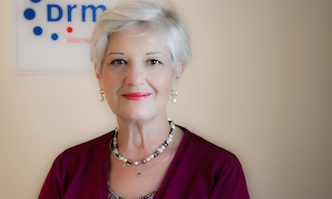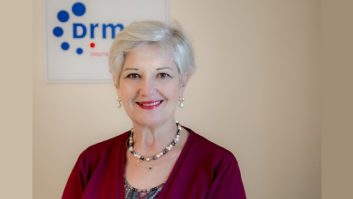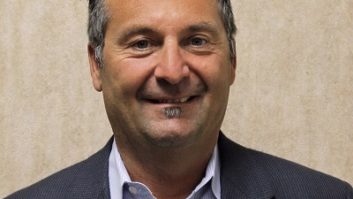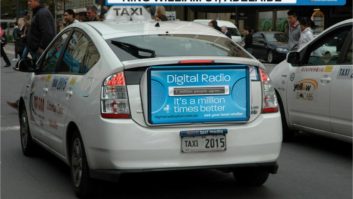The author is vice chairman of the U.S. DRM Group and president of the National Association of Shortwave Broadcasters. The following was reported by the NASB, summarizing a presentation given at the NASB-U.S. DRM annual meetings in Cary, N.C.
Dr. Donald Messer left the DRM Consortium at the end of March. Some months earlier he had relinquished his role as chairman of the Technical Committee of the DRM Consortium. He is now actively involved in promoting Digital Radio Mondiale in the United States.
At the USA DRM annual meeting May 8 in Cary, N.C., he talked about some of the activities he has been involved in during the past several months regarding DRM transmissions “from the U.S. to the U.S.”
Messer said there are two major elements involved in domestic DRM broadcasting in the United States. One is getting the FCC to approve domestic shortwave broadcasting, which is not permitted currently. Experimental testing is needed for this.
The second element is building a constituency by doing developmental work to be able to convince the FCC that domestic DRM has value, includes local content, etc. Thus, we are dealing with getting digital modulation approved in the HF broadcasting bands for domestic use.
As far as medium-wave is concerned, Messer agreed with those who have said that it has to be an analog-DRM simulcast on adjacent channels. “You can’t disturb the analog transmissions,” he said.
He noted that very successful simulcast DRM medium-wave tests have been conducted in Mexico, Brazil and India.
Messer explained that DRM+ includes all the broadcasting bands above 30 MHz and below 108 MHz. He insists that “there is some activity, although very limited, in the United States with regard to trying to get experimental licenses for DRM+.”
SW
But shortwave is where most of the activity is with DRM in the United States. Messer divides this into three categories: local coverage on 26 MHz, regional coverage and traditional shortwave broadcasting for long-distance coverage.
On 26 MHz, Messer said transmitters of 200 watts or less can provide local community radio services. He noted 26 MHz is a natural alternative for the FCC, given the controversy about using channels within part of the existing FM band for low-power FM community radio stations.
Using DRM on 26 MHz would reduce the political pressure that the FCC is receiving from both sides — the NAB on one and — for example — universities and religious organizations on the other. These low-power DRM stations would cover 10–100 square miles.
Messer says at least three organizations are working with him on developing DRM tests on 26 MHz for local coverage, but no experimental licenses have been issued yet.
The second category of DRM on shortwave is a medium-range regional service. Messer explained that he has been working with a group that has filed an application for at least two years of experimental operation in Alaska, and the FCC has recently accepted that application for evaluation. (See story, here.)
“Alaska is roughly twice the size of Texas,” said Messer, “so you’re talking about a fairly large regional coverage.”
The plan is to use a 10 or maybe 20 kHz DRM signal with up to four languages of audio to cover the entire state using old 100-kilowatt Defense Department transmitters near Fairbanks.
Says Messer: “The Cold War ended, so the transmitters are up there and are not being used.”
He says he is working with a company located near Fairbanks that would eventually like to provide a digital audio service throughout the State of Alaska.
Does he think the project will be approved? “My guess is that the FCC evaluators will approve this application sometime before the end of this year when the cold sets in and the sun doesn’t rise anymore. We will have the antenna field constructed in accordance with a very good antenna design. Then starting next year when the snows go away … we will start experimental broadcasting.”
Messer cites two key reasons why he thinks the FCC will approve the Alaska application.
First of all, he says there isn’t much information about ionospheric propagation at latitudes of around 60 degrees north with regard to how a digital signal such as DRM would work for a broadcasting service. “So this is pioneering,” he says.
Secondly, the Alaska population outside of Anchorage, Fairbanks and Juneau is sparse. Taking this to a global level, Messer says: “If a country has half its population living in three cities, what about the other half?”
He criticized some Voice of America research in parts of the world like West Africa that has been used to downplay the importance of shortwave in favor of FM and Internet. Messer asserts that often this research has not taken rural areas sufficiently into account — areas that still depend largely on shortwave.
“Without trying to minimize the value this has to Alaska,” he said, “this is transportable to other places in the U.S. Just think about — if I can use the phrase — the ‘red states’ in the United States. A lot of them are sparsely populated — the Dakotas, Montana, up and down the Rocky Mountain area.”
SW to U.S.
The final category of DRM on shortwave is “traditional” shortwave for long-distance skywave coverage, but aimed at a domestic audience.
Messer said TCI International did some research showing that five transmitters could cover the U.S. with a DRM signal “at power levels that are consistently lower than what you’re used to.” He said it remains to be seen if existing shortwave stations in the United States or other commercial concerns will show an interest in the possibility of domestic HF broadcasting.
As for the U.S. government, “The IBB is prohibited from doing this, but I can tell you there is some interest in trying to help us out with some domestic broadcasting.” He noted that the International Broadcasting Bureau is a DRM member.
Messer realizes that the big challenge in the long term for these domestic shortwave DRM applications is that the FCC would have to change its rules to permit domestic broadcasting of digital signals from the U.S. to the U.S.
In summary, for DRM on medium-wave in the United States, Messer says “the technical capability is there. I think the market there depends on how well HD Radio does in the medium-wave band over time.” For shortwave — local community services, Alaska-type regional services, and long-range DRM services — the question is, “are there markets — perhaps niche markets — in the U.S. for this kind of broadcasting? The kinds of things I am talking about within the U.S. will require at least 1 to 2 to 3 years of testing.
“By that time, if there aren’t consumer receivers ready, forget you heard this speech.”
Meanwhile, Messer pointed out that there are currently shortwave DRM transmissions to the United States from Canada, Bonaire, French Guiana and other sites. And “nobody can prevent some Mexican entrepreneur from broadcasting out of Chihuahua or something like that as long as it’s coordinated with the HFCC.”












